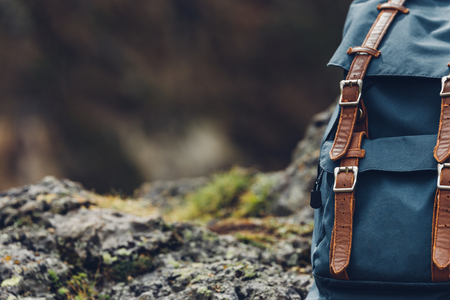1. Understanding the Thru-Hike Experience
What is a Thru-Hike?
A thru-hike means hiking an entire long-distance trail from start to finish in one go. In the U.S., two of the most famous trails for this adventure are the Appalachian Trail (AT) and the Pacific Crest Trail (PCT). Each covers thousands of miles, crossing states, climates, and communities.
The Unique American Thru-Hiking Culture
Thru-hiking in America isn’t just about walking long distances. It’s about joining a community built on shared goals, trail magic (unexpected acts of kindness), and a unique language only hikers understand. The culture emphasizes self-reliance, respect for nature, and camaraderie among hikers.
Key Differences: Appalachian Trail vs. Pacific Crest Trail
| Trail | Length | Main Terrain | Popular Season |
|---|---|---|---|
| Appalachian Trail (AT) | ~2,200 miles | Forests, hills, rocky paths | Spring to early fall |
| Pacific Crest Trail (PCT) | ~2,650 miles | Desert, mountains, forests | Late spring to early fall |
Lingo Every Thru-Hiker Should Know
- NoBo/SoBo: Northbound or Southbound hiker direction.
- Zero Day: A day with no hiking—resting up in town or at camp.
- Trail Name: A nickname given by fellow hikers, used instead of your real name on trail.
- Hiker Box: A communal box at hostels or shelters where hikers leave extra gear or food for others.
- Trail Magic: Unexpected acts of kindness—like free snacks or rides—from strangers known as “trail angels.”
The Community Spirit
The heart of thru-hiking is its people. Whether you’re sharing stories around a campfire or helping someone patch a blister, the sense of belonging shapes every mile. You’ll find everyone from college grads taking a gap year to retirees seeking adventure.
2. Gear Essentials for Going Light
Why Lightweight Gear Matters on Thru-Hikes
If you’re planning a thru-hike on iconic American trails like the Appalachian Trail (AT) or Pacific Crest Trail (PCT), going lightweight is a game-changer. Less weight means less fatigue, fewer injuries, and a more enjoyable experience. But going light doesn’t mean sacrificing comfort or safety—it’s about making smart choices.
Backpacks: Finding the Right Balance
The right backpack is your base for every other gear decision. Lightweight packs typically weigh under 2.5 lbs (1.1 kg) and have capacities of 40-60 liters—enough for multi-day stretches without overpacking.
| Brand | Model | Weight | Trail-Tested Pros |
|---|---|---|---|
| ULA Equipment | Circuit | 2.4 lbs | Durable, used by many AT/PCT hikers |
| Osprey | Exos 58 | 2.7 lbs | Great ventilation, comfortable suspension |
| Gossamer Gear | Mariposa 60 | 2 lbs | Lightweight yet roomy, highly customizable |
| Zpacks | Arc Blast 55L | 1.2 lbs | Ultralight, waterproof material, pricey but popular for PCT |
Shelter: Tents vs. Tarps vs. Hammocks
Your shelter choice depends on your comfort level and trail conditions. Here’s what seasoned hikers recommend:
- Tents: Most popular on both AT and PCT for protection from bugs and weather (e.g., Big Agnes Copper Spur, Zpacks Duplex).
- Tarps: Super light but require more skill to set up; best in dry climates like the southern PCT.
- Hammocks: Great in wooded areas (like much of the AT), but not as versatile above treeline or in desert sections.
| Shelter Type | Main Benefit | Main Drawback |
|---|---|---|
| Tent (Freestanding) | Easiest setup, bug/weather protection | Heavier than tarps/hammocks |
| Tarp System | Lighter, flexible pitching options | No bug protection unless paired with netting |
| Hammock Kit | Comfortable in woods, minimal ground impact | Lacks versatility in open terrain/desert sections |
Sleep Systems: Stay Warm, Sleep Light
Your sleep system includes your sleeping bag/quilt and pad. Many experienced thru-hikers prefer down quilts (like Enlightened Equipment Revelation) for their warmth-to-weight ratio and packability. Sleeping pads range from ultralight closed-cell foam (like Therm-a-Rest Z Lite Sol) to inflatable options (NEMO Tensor Insulated).
- Aim for a sleep system under 2 lbs total if possible.
- PCT hikers often choose slightly warmer bags due to chilly Sierra nights; AT hikers may switch out bags seasonally.
- An inflatable pad is comfier but can puncture; foam pads are bombproof but bulkier.
Clothing: Layer Smart, Pack Light
The key to staying comfortable across changing weather is layering. Most thru-hikers recommend:
- Synthetic or merino wool base layers (no cotton—it stays wet!)
- An ultralight down or synthetic puffy jacket for evenings/mornings (Patagonia Micro Puff, Mountain Hardwear Ghost Whisperer)
- A rain shell that actually works (Outdoor Research Helium II, Frogg Toggs for budget option)
- Nylon hiking pants/shorts and one set of camp clothes kept dry at all times.
- Darn Tough socks—beloved by thousands of American long-distance hikers for durability and comfort.
Packing Tips from Trail Veterans:
- “Don’t pack your fears”—avoid carrying extra ‘just in case’ items you rarely use.
- “The best gear is what works for you after miles on the trail—not just what’s trending online.”
- “Trade-offs are real: lighter gear often means less durability or comfort. Know what matters most to you.”
- “Always test your full kit on local shakedown hikes before hitting the big trails.”

3. Planning Your Route and Logistics
Mapping Out Your Hike: AT vs. PCT
Getting ready for a thru-hike means thinking ahead about every step—literally. The Appalachian Trail (AT) and Pacific Crest Trail (PCT) each have their own quirks when it comes to planning your route.
| Trail | Navigation Needs | Popular Apps/Maps | Unique Challenges |
|---|---|---|---|
| Appalachian Trail (AT) | Well-marked white blazes, but dense forests can be disorienting. | FarOut (formerly Guthook), AWOL Guidebook | Frequent elevation changes, lots of road crossings, tight tree cover limits views. |
| Pacific Crest Trail (PCT) | Longer stretches between trailheads, more open terrain. | FarOut, Halfmile Maps | Sparse water sources in SoCal, snow navigation in the Sierra, remote resupply points. |
Resupplying in Trail Towns
No matter how light you pack, you’ll need to restock food and essentials along the way. Both trails pass through or near towns, but how you resupply can look pretty different.
Appalachian Trail Resupply Tips
- Frequency: Towns are often closer together—every 3-5 days is common.
- Methods: Walk or hitch into town, use hostels for mail drops or gear swaps.
- Pitfalls: “Town vortex”—getting stuck enjoying pizza and showers instead of hitting the trail!
Pacific Crest Trail Resupply Tips
- Frequency: Can be 5-10 days between reliable towns, especially in the Sierra or Northern California.
- Methods: Mail drops are popular for remote sections. Plan ahead with post office hours and pickup locations.
- Pitfalls: Limited grocery options in small towns—some places only have gas stations or pricey general stores.
PCT vs. AT Resupply Table
| AT | PCT | |
|---|---|---|
| Towns per 100 miles | 6-8 | 2-4 |
| Main resupply method | Buy as you go, some mail drops | Mainly mail drops plus in-town shopping |
| Easiest section for resupply | Northern Virginia to Massachusetts | Sierra to Northern California (if planned well) |
| Toughest section for resupply | Maine’s 100-Mile Wilderness | Sierra Nevada & Southern California deserts |
Leveraging Trail Angels and Hiker Support Networks
The American long trails are famous for “trail magic”—unexpected acts of kindness from locals known as trail angels. Here’s how to tap into these networks:
- Lodging and Rides: Some trail angels offer overnight stays or shuttle rides to/from the trail. Check hiker forums or Facebook groups before your hike starts.
- Water Caches: On the PCT, especially in desert sections, volunteers leave water caches at key spots—never rely on them 100%, but they can save the day if running low.
- Food Drops & Cookouts: In both the AT and PCT communities, you might find coolers full of sodas, snacks, or even full cookouts during busy hiking seasons.
- Manners Matter: Always say thank you! A little gratitude goes a long way and helps keep the tradition alive for future hikers.
Coordinating Transportation: Getting To and From the Trailhead
This part can be trickier than you’d think—especially on the PCT where start/end points are far from major cities. Heres what works best:
- PCT Southern Terminus (Campo, CA): Most hikers fly into San Diego then use rideshare services, buses, or pre-arranged shuttles via Scout & Frodo (famous trail angels).
- PCT Northern Terminus (Manning Park, BC): Usually requires a combo of bus and train via Seattle or Vancouver; remember border crossing rules if youre not a U.S. citizen!
- AT Southern Terminus (Springer Mountain, GA): Atlanta is the main hub; get a shuttle from MARTA North Springs station or stay at Amicalola Falls Lodge before starting your hike.
- AT Northern Terminus (Katahdin, ME): Bangor is closest city; shuttles run to Millinocket and Baxter State Park. Book early—spots fill up fast during peak season!
Packing It All Together: Sample AT & PCT Planning Timeline Table
| # Weeks Before Start Date | Your Planning Task |
|---|---|
| 24+ | Create route plan; secure permits (especially for PCT!) |
| 16-20 | Create resupply strategy; research post offices/grocery stores |
| 12-16 | Liaise with trail angels; arrange transport to trailhead |
| 8-12 | Email gear lists to yourself/family; mail first few food drops |
| -2 weeks | Purge extra weight; finalize weather check; confirm all bookings |
| -1 week | Pace yourself mentally! Time to double-check everything one last time |
If you keep these practical steps in mind while planning your lightweight thru-hike adventure on either the AT or PCT, you’ll be setting yourself up for a smoother—and much more enjoyable—journey!
4. Trail Nutrition and Staying Fueled
Meal Planning for Long-Distance Hikes in the U.S.
When you’re tackling a thru-hike on the Appalachian Trail (AT) or Pacific Crest Trail (PCT), keeping your pack light and your body fueled is a balancing act. Meal planning isn’t just about calories—it’s about what you can carry, cook, and enjoy day after day. Here’s how experienced hikers approach nutrition on America’s most iconic long trails.
Mail Drops vs. Resupplying in Towns
There are two main strategies for getting food along the trail: sending yourself mail drops or resupplying at local stores. Each has its pros and cons, especially when you’re passing through small rural towns with limited options.
| Method | Pros | Cons |
|---|---|---|
| Mail Drops | Reliable access to favorite foods; caters to dietary needs; less time spent shopping in town | Upfront planning needed; may get tired of pre-selected food; post office hours can be tricky |
| Town Resupply | Flexibility; supports local businesses; easy to adjust cravings or needs | Limited selection in rural areas; higher prices; may have to settle for less nutritious options |
Hiker Favorites: What’s in a Thru-Hiker’s Food Bag?
Thru-hikers need foods that are calorie-dense, lightweight, and quick to prepare. Here are some classic picks you’ll find in the packs of seasoned hikers:
- Instant oatmeal packets: Lightweight, filling breakfast option.
- Tortillas & peanut butter: High-calorie, non-crushable staples.
- Dehydrated meals: Backpacker favorites for hot dinners after a long day.
- Tuna or chicken packets: Quick protein fix, no refrigeration required.
- Nuts, trail mix, jerky: Easy snacks packed with energy.
- Candy bars & cookies: Simple carbs for those big climbs.
Packing Smart: Calorie-Dense Food Ideas
| Food Item | Calories per Ounce (approx.) |
|---|---|
| Pepperoni sticks | 140-150 |
| Nuts/trail mix | 160-180 |
| Peanut butter (single-serve) | 170-190 |
| Tortillas (flour) | 80-90 each |
| Dried fruit | 80-100 |
| No-cook ramen noodles | 110-120 per pack (dry) |
Navigating Limited Grocery Options in Rural America
The farther you get from cities, the more creative you’ll need to be. Small-town grocery stores or gas stations might not stock your go-to hiking meals. Adaptability is key—be ready to mix and match whatever is available. Some tips:
- If fresh produce is limited, look for canned veggies or fruit cups for vitamins.
- Canned tuna or spam adds protein even if it’s heavier than pouches.
- Cereal bars, cheese sticks, and tortillas are common finds almost everywhere.
- If all else fails, supplement with what you can carry from previous towns or mail drops.
- Diversify your menu so you don’t burn out on any one food—even Pop-Tarts can get old after 2,000 miles!
The right fuel keeps your spirits high and legs moving strong as you log those miles on America’s legendary trails.
5. Safety, Leave No Trace, and Trail Etiquette
Staying Safe on Long Trails
Safety is a top priority when thru-hiking the Appalachian Trail (AT) or Pacific Crest Trail (PCT). Always tell someone your planned route and expected check-in times. Carry a map, compass, and GPS device—don’t rely only on your phone. Many hikers use personal locator beacons (PLBs) for emergencies. Stick to established trails, avoid hiking alone at night, and trust your instincts if something feels off.
Wildlife Encounters
| Animal | What to Do |
|---|---|
| Black Bear | Don’t run. Make noise, back away slowly, and store food in bear canisters or hang bags as required. |
| Snake | Watch where you step and sit. If bitten, stay calm and seek help—don’t try to suck out venom. |
| Mountain Lion | Make yourself look big, maintain eye contact, and back away slowly—never turn your back or run. |
Weather Awareness
Weather on the AT and PCT can change quickly. Check forecasts daily when you have service. In the Sierra Nevada or White Mountains, storms roll in fast—know where shelter is. Carry lightweight rain gear and know the signs of hypothermia and heat exhaustion.
Leave No Trace Principles
The best way to keep these iconic trails beautiful is by following Leave No Trace (LNT) ethics:
- Plan Ahead and Prepare: Know rules for camping, fires, and food storage.
- Travel and Camp on Durable Surfaces: Stay on trail; camp 200 feet from water sources.
- Dispose of Waste Properly: Pack out all trash—including toilet paper—and use catholes for human waste (6-8 inches deep).
- Leave What You Find: Don’t pick flowers or take rocks/souvenirs.
- Minimize Campfire Impact: Use a camp stove; only build fires where permitted.
- Respect Wildlife: Observe animals from a distance; don’t feed them.
- Be Considerate of Other Visitors: Keep noise down and yield to uphill hikers.
Trail Etiquette: Making the Trail Welcoming for Everyone
- Yielding: Uphill hikers have the right of way. Step aside for faster hikers or groups coming toward you.
- Campsite Sharing: Be friendly but respect others’ space—especially in crowded areas like shelters.
- Packing Out Trash: “Pack it in, pack it out” is a golden rule. Even pick up litter you didn’t drop.
- No Loud Music: Use headphones if you want music; let nature’s sounds prevail for everyone else.
- Dogs on Trail: Keep dogs leashed where required, clean up after them, and ensure they don’t disturb wildlife or other hikers.
- Hello and Goodbye: A simple “hey” or “good morning” goes a long way in building trail community!
The AT and PCT are shared spaces where safety, respect for nature, and kindness to others make every hike better—for both you and those who follow in your footsteps.

